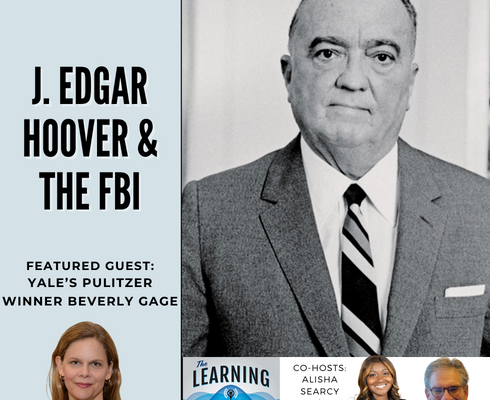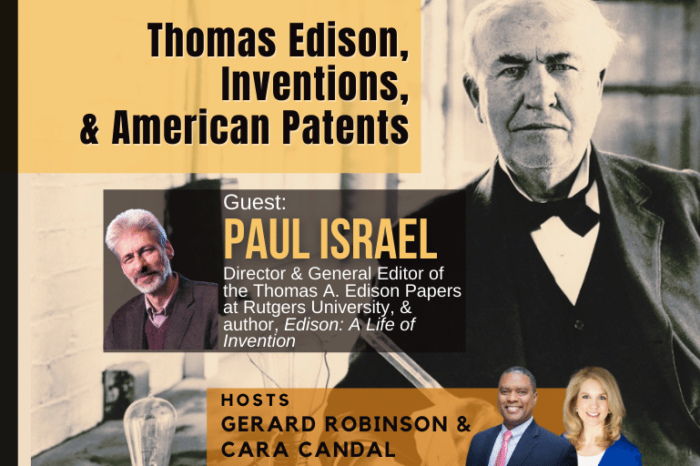Rutgers Prof. Paul Israel on Thomas Edison, Inventions, & American Patents
/in Featured, Podcast, US History /by Editorial StaffThis week on “The Learning Curve,” co-hosts Gerard Robinson and Cara Candal talk with Prof. Paul Israel, Director & General Editor of the Thomas A. Edison Papers at Rutgers University, and author of Edison: A Life of Invention, the definitive biography of America’s greatest inventor. Professor Israel describes Edison’s public and private life, as well as the impact of his world-changing inventions, such as the hot-filament light bulb, the phonograph, and the motion-picture camera. Called the “Wizard of Menlo Park,” Edison is still the American with the most individual patents — 1,093 in the U.S. and 1,200 in 34 foreign countries. They discuss what educators and students in the 21st century can learn from how Edison ran the country’s first industrial research laboratory in New Jersey, and the importance of the U.S. Patent Office in protecting inventors’ exclusive right to profit from their inventions. They also discuss what students should learn about the role inventions have played in the historic success of the United States and in the highly dynamic and competitive global economy. Professor Israel concludes with a reading from his biography.
Stories of the Week: The Department of Defense Education Activity (DoDEA) is celebrating its 75th anniversary of providing education for the children of American service members. Today, DoDEA operates 160 schools in eight districts across 11 countries, seven U.S. states and two U.S. territories for more than 67,000 students. (Read Pioneer’s related 2015 report.) In West Virginia, the Professional Charter School Board approved three applications for the state’s first ever charter public schools, which will provide another option for families who want and need a different learning environment.
Guest
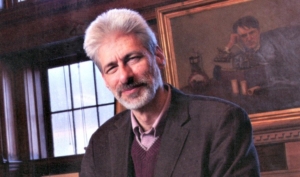 Prof. Paul Israel is the Director and General Editor of the Thomas A. Edison Papers at Rutgers University, and has made the study of American invention and innovation his specialty. The Edison Papers provides leadership in publishing and developing the documentary legacy of America’s most prolific inventor and innovator. To date, the project has produced nine volumes of The Papers of Thomas A. Edison, as well as an online edition with nearly 150,000 documents. In 2000, Dr. Israel was awarded the prestigious Dexter Prize for Edison: A Life of Invention (1998). His other books include, From Machine Shop to Industrial Laboratory: Telegraphy and the Changing Context of American Invention,1830-1920 (1992) and Edison’s Electric Light: The Art of Invention (2010); written with Robert Friedel. Dr. Israel is a frequent consultant and contributor to projects seeking material about Edison and invention, including nearly thirty television and radio documentaries. He also teaches graduate and undergraduate courses in the history of technology and innovation.
Prof. Paul Israel is the Director and General Editor of the Thomas A. Edison Papers at Rutgers University, and has made the study of American invention and innovation his specialty. The Edison Papers provides leadership in publishing and developing the documentary legacy of America’s most prolific inventor and innovator. To date, the project has produced nine volumes of The Papers of Thomas A. Edison, as well as an online edition with nearly 150,000 documents. In 2000, Dr. Israel was awarded the prestigious Dexter Prize for Edison: A Life of Invention (1998). His other books include, From Machine Shop to Industrial Laboratory: Telegraphy and the Changing Context of American Invention,1830-1920 (1992) and Edison’s Electric Light: The Art of Invention (2010); written with Robert Friedel. Dr. Israel is a frequent consultant and contributor to projects seeking material about Edison and invention, including nearly thirty television and radio documentaries. He also teaches graduate and undergraduate courses in the history of technology and innovation.
Next Episode:
The next episode will air on Wednesday, November 24th with guest, Nicholas Basbanes, author of the 2020 literary biography, Cross of Snow: A Life of Henry Wadsworth Longfellow.
Tweet of the Week:
KSBA confirms it withdrew from NSBA, its national group, "in response to a pattern of dysfunction within the organization."
"KSBA objected to the tone, incendiary language and some characterizations made within" NSBA's Sept. letter about threats to school boards, a spox said.
— olivia krauth (@oliviakrauth) November 10, 2021
News Links:
West Virginia’s first charter schools approved
https://www.whsv.com/2021/11/10/west-virginias-first-charter-schools-gain-approval-by-board-members/
DoDEA Celebrates 75 Years of Excellence in Teaching and Learning for Military-Connected Students
https://www.dodea.edu/dodeaCelebrates/EducationWeek.cfm
Links Related to the Interview:
The Republic of Gadgets – America’s Great Inventors
The Lowell Sun op-ed: U.S. history an innovative field worth teaching
https://www.lowellsun.com/2012/02/07/us-history-an-innovative-field-worth-teaching/
Read a Transcript of This Episode
Please excuse typos.
[00:00:00] Gerard Robinson [GR]: Hello listeners. This is Gerard Robinson back at you again for another wonderful week of the learning curve. And let me say happy education week to every one of the United States, because this is a week where we can talk a lot about education, particularly public schools, and on the learning curve, we talk about a lot of things, things in education.
[00:00:20] So this is a good way to kick off Cara.
[00:00:22] Cara: I’m doing well, happy education. I didn’t even know it was education week, as you know, you and I will both be at the national summit on education later this week, which is exactly. And I’m very much looking forward to that and it eager to see you in person it’s been awhile.
[00:00:38] but yeah, I can’t complain , doing well here. What else do we Are we thinking about with regard to public schools in particular in education week? What do you think of.
[00:00:48] So we know
[00:00:50] GR: from our support of parental choice, that in January we have national school choice week, and that’s what started several years ago.
[00:00:58] But American [00:01:00] education. has its roots back to the early quarter of the 20th century. So in 1919, the American Legion and national education association got together said, we need to do something to support and recognize the importance of public schools. Now those of us who listened to some of our guests we’ve had on the show, talk about world war II.
[00:01:21] Well, we’re coming out of world war one and both the American Legion and the NEA was pretty concerned about the fact that 25% of the people who were in the military were actually illiterate. And we had to figure out what could we do to address this? And so they said, well, tell you what let’s put together an American education.
[00:01:41] And we’ll kick it off in 1921. Well, from 1921 forward, you had other groups who joined the PTA national school board association, the superintendents and Melbourne, but it was really a big push. And when you think about the number of weeks or days that we celebrate. Patient. this is definitely one of the oldest ones in the country.
[00:01:58] And this in [00:02:00] fact leads to my story of the week, because as we’re talking about American education week and its links to the post world war one, well, this year we’re celebrating the 75th anniversary of the department of education and education activity, better known as the DOD schools. So there’s 75 this year and they too have roots going back to the early 19 hundreds in 1980.
[00:02:22] Well, military families, basically found themselves if they were in the Philippines. Well, they need schools. And so we began to start our first, what now, today would be called a DOD school. Start off in the Philippines in 1918. Well, of course we talked about 1921. We’ll fast forward to 1946 and we’re coming out of a, another war.
[00:02:46] And whenever we come out of a war, we ask really tough questions and some insightful questions as well, about how well are the American people and our military prepared for either the next war or in this situation. We, , [00:03:00] readjusted or re-employ back into American society. The army dependence, , schools, , service DDS, and this was to provide educational, services and programs to our military personnel who were overseas while there were a couple of former educators on one of them is.
[00:03:19] Major Virgil Walker, who opened up a school in Germany and Herbert Ingram, who opened up a school in Tokyo, Japan. that was the start of what later would become DOD schools. And so the schools in the DOD system are similar to the ones we have here. They teach, the three RS. They have teachers, administrators, principals, but they’re actually.
[00:03:41] Ease in and we support people there. Well, let’s move to 1992 and Congress decided to unify, but both domestic and overseas operations, and that created what we now call the department of defense education activities, better known as the deal. Well, we know 1992, another point where we are involved in a [00:04:00] conflict overseas.
[00:04:01] Well, if you fast forward today, a there are approximately 160 schools in eight districts across 11 countries, seven us states and two us territories with more than 67,000. Students who are supported by 8,000 teachers across the globe. Well, as you know, Cara, the pioneers who is usually ahead of the game on this, so I went to.
[00:04:27] Research and identified that in 2015, Bruce whites actually published a report called support and defend the K-12 education of military connected children. And in that report in 2015, the pioneer Institute really talked about the. On the education that, , DOD students are receiving the quality of the teachers and the
[00:04:49] experience that students receive
[00:04:51] GR: that only going to an American school on , someone else’s soil, but also just the opportunity to travel and meet people of different cultures.
[00:04:58] Well, you and I, both [00:05:00] supporters of assessments and trying to identify people’s strengths and development. Well, you may not be surprised to know some of our listeners may that even as far as 2015, some of the best NAPE scores in the country were in fact at DOD schools fast forward to now we have the same thing.
[00:05:17] And before I end on celebrating the work of educators and DOD, I want to give a shout out to three people. Jeremy Onley, who was a 2000 department of defense teacher of the year. Danielle Massey 2013 department defense teacher of the year and Khalisa wing 2017 U S department of defense teacher of the year.
[00:05:38] These are three people that I had an opportunity to interview on my podcast at work called in character. And they talked about all the wonderful things they learned and experience either as a teacher or in the case of. I believe she was also a student. So let’s give a shout out, do an American education week to the department of defense school.
[00:05:56] They do good work and we need to learn more about them and learn about.[00:06:00]
[00:06:00] Cara: Yeah, I have to say, Jared, I’m so happy that you have highlighted department of defense schools and specifically that you talked about their wonderful NAPE scores, because they really are, leaders in the nation and a lot of ways in terms of really helping kids to achieve stellar outcomes.
[00:06:16] and another thing about DOD schools that I think is really interesting. If you look at some of the research, you know, I think we rarely. Enough about military connected families in this country. And, a lot of our folks who are serving in, different kinds of services in this country, they move around a lot.
[00:06:34] They move around a lot. And for many, many kids that means interruptions to education. That means, entering one school where there’s a different curriculum being taught or in a different way than another school gaps in learning, et cetera, et cetera. And that’s one of the big reasons that, , I personally, I mean, I know you are to advocate for, real choices for military connected families.
[00:06:53] So many of our choice programs have, , limits and qualifications that people have to meet to get in. And, as of late, we’ve been [00:07:00] seeing a lot more programs say, you know what? And also military connected families should receive priority DOD schools, where they exist for families phenomenal because they’re all teaching to the same high quality curriculum, which allows kids or families.
[00:07:13] Who do move around a lot. To sort of enter where they need to when they arrive. And so, I’m all for diversity education and, diversity of curriculum, as long as it’s high quality, et cetera. But when you’re dealing with a population of students, that’s whose families have dedicated their lives to serve.
[00:07:31] And they’re moving around a lot. We really need to make sure that nobody falls through the cracks of our systems. So, thank you so much for bringing that to our attention. I hope that it encourages people to find out more about DOD schools and some of the phenomenal work that. so I have a story of the week, Gerard, that I’m pretty excited about because we’ve been watching this one for a while, West Virginia.
[00:07:52] , we’ve been talking probably more so in the spring when West Virginia passed the nation’s first universal [00:08:00] education savings account, we’ve been talking a lot about West Virginia, but one of the things that I think is overlooked is that this is a state. That has literally gone from about zero to 100 in the blink of an eye when it comes to expanding options for families.
[00:08:13] So until very recently, West Virginia, Almost zero choice options for families. And when I say zero, I mean, zero, I mean, they didn’t have any charter schools. Their charter school law is quite recent. They didn’t have any private school choice and we can talk on another show about open enrollment, district boundaries and all of those good things, but things are changing in West Virginia.
[00:08:35] , and today I’m here to talk about not just on the private school choice front. So, in fact, Jeff. This week, just last week. I’m sorry. the state of West Virginia. It’s first three charter public schools. So the first three charter public schools in the state will be West Virginia academy, Eastern panhandle academy and nitrile preparatory academy.
[00:08:56] Now this is a really big deal in a state [00:09:00] that was, you know, we saw huge red for ed movement in West Virginia, which although some positives there, I think it, gave teachers a lot of voice and some momentum, but certainly critique. Reforms like charter schools, but to go from that, to now having three charter schools in pretty short order is quite impressive in the hope is that, , these public charter schools, which will not be able to select who is admitted, they will hold lotteries.
[00:09:24] If they are oversubscribed, can really provide students with, something different. On the Wilcon will be the four runners of course, to West Virginia is universal education savings account, which we will see, start accepting applications later this year. So I think it’s really exciting stuff. the article I have to say from.
[00:09:46] Fox news in West Virginia is what I’m looking at. The title is west Virginia’s. First charter schools are approved. it does a little bit to point out that these schools are going to be at two of them are going to be managed by, , Emo’s educational [00:10:00] management organizations. And as you, and I know there’s a lot of controversy in my opinion, mostly about nothing.
[00:10:05] When it comes to EMS public school districts do contract with a lot of private entities as well, but. they spend a little bit of time talking about that. These operators, these charter school operators don’t receive, great grades, accountability grades in the other states where they operate.
[00:10:19] And it’s not until got to love at Gerard. The very end of the article that the authors point out that actually, . , the EMS that have been brought in to run these schools in West Virginia that operated other states, mainly operating in other states because they’re turning around lower performing schools.
[00:10:33] Hence their accountability scores might not look stellar right away. It’s about growth, right? Getting. , a rising tide will lift all boats and turn around and take some time. So I think that it’ll be really interesting to see how the state leverages these three new charter schools. I hope that they do proceed to support these charter school operators in opening quickly so that they can, admit the students who want seats there.
[00:10:55] And this will be one to watch, but I’m really happy for what’s going on [00:11:00] in that part of the country for the momentum in West Virginia. And it’s something to keep an eye on.
[00:11:05] GR: Take me home country roads. Many of you know that my father’s from West Virginia is going to come.
[00:11:15] I know, I
[00:11:15] Cara: didn’t say it was the pause.
[00:11:16] You know, I was just waiting for a little bit of John Denver. We needed it, but I certainly needed
[00:11:23] GR: one of them is not singing, but I am happy for the people of West Virginia. My father was born there, raised there. What is the school teacher, 30 plus years and the Charleston public school system. Let me give a shout out to the American Federation for children at choice and all the other organizations who on only flew in Excel and get a full course.
[00:11:44] I say, I pause for, make sure you gave , your group a shout. This didn’t happen by itself, and it did not happen overnight. It was
[00:11:50] years of work. the
[00:11:51] GR: fruits you see today, those seeds were planted a long time
[00:11:54] ago.
[00:11:55] GR: And the pandemic and a number of things, teacher strike, changes in political ideology [00:12:00] and frankly frustration with what they have at, led to this.
[00:12:03] And I’m so glad you brought the point about the for-profit charter school is you and I both know. Less than 10% of the operators in the public schools, which public charter schools across the country. So it’s a small percentage. I look forward to seeing exactly what’s
[00:12:17] going to happen,
[00:12:18] GR: in that state in the next few years, but glad they have a process, to authorize it and get them up and running.
[00:12:24] And I’m a supporter of EMOs. Before profits in education, as I’ve said in the past, my problem isn’t with, for profit companies, my problem is with, for pimping and for BP is not endemic to just private institutions. You have
[00:12:44] non-profit institutions, you
[00:12:45] GR: have traditional schools who have pimped the system have pimped children and have used money in horrible way.
[00:12:52] And because as they had a very different tax status, we somehow don’t think they are and they are as evil. So for me, it’s not the
[00:12:58] profit, it’s the. [00:13:00]
[00:13:00] Cara: Yeah. It’s all about what you do for kids at the end of the day. Right? And so we’re going to be watching West Virginia to see what happens there. Well, we are now going to take a hard left turn.
[00:13:12] Gerard. We’ve got a fantastic guest today. Certainly here to talk about education week, although he will be educating us. He’s also an educator of others. We’re going to be speaking with professor Paul Israel. He is the director and general editor of the Thomas A Edison papers at Rutgers university, and he’s been studying American invention and innovation.
[00:13:34] So in fact, maybe he will talk to us a bit about American invention and innovation as it relates to education coming up right after this short.[00:14:00]
[00:14:06] Learning curve. We are happy to welcome Professor Paul Israel. He is the director and general editor of the Thomas A Edison papers at Rutgers university and has made the study of American invention and innovation. His specialty. The Edison papers provides leadership in publishing and developing the documentary legacy of America’s most prolific inventor and innovator to date.
[00:14:29] The project has produced nine volumes of the papers of Thomas A Edison, as well as an online edition with nearly 150,000 documents. In 2000, Dr. Israel was awarded the prestigious Dexter prize for Edison, a life of invention, and that was in 1998. His other books include from machine shop to industrial laboratory.
[00:14:50] Telegraphy and the changing context of American invention, 1830 to 1920 published in 1992. And Edison’s electric light. The art of [00:15:00] invention published in 2010 and written was Robert Friedel. Dr. Israel’s a frequent consultants and contributor to projects, seeking material about Edison and invention, including.
[00:15:10] 30 television and radio documentaries. He also teaches graduate and undergraduate courses in the history of technology and innovation. professor Paula Israel. Welcome to the learning. Well, we’re really excited to have you, and to hear more about Thomas Edison and about your work now, Thomas Edison was famously called the wizard of Menlo park and he invented the hot filament light bulb, the phonograph, the motion picture camera.
[00:15:36] So many things that are the predecessors of things that we depend on today. Would you share with our listeners, what teachers and students today should know about Edison? his public persona and his private life as well as his invention.
[00:15:50] Paul Israel: one big takeaway I would have about Edison is that contrary to kind of the popular mythology [00:16:00] about him, he was never alone in Venice.
[00:16:03] Kind of working off on his own, just doing cut and try until he finally came upon whatever solution. , he was looking forward to an invention and his son was a very, sophisticated and inventor from the get-go. he always had collaborators. Initially these were, , people in the machine shops of, American industry.
[00:16:25] made the technologies that were used for all sorts of industries. And they were also the same people who help modify them. And Edison worked with, , machinists, , throughout his career. Edison is also a guy who, in a sense invents the research and development laboratory. So he had a large staff of people working with him was never working alone.
[00:16:47] So I think that’s one of the, the keys is that Edison was really a collaborator. And inventors sort of off on his own. So that’s, one really important takeaway. another one, has to do with his [00:17:00] private life. So Edison was one of the most famous people in the world. he became the wizard of Menlo park when he invented the phonograph.
[00:17:09] And this was such an astounding invention that. within about, less than half a year after he invented it, he had become known pretty much what worldwide and wizard of Menlo park was one of many nicknames. He was given the Napoleon and of invention the inventor of the age, but the one that stuck was the wizard of Menlo.
[00:17:29] because of the laboratory where that took place, the problem with being so famous of course, is that over time Edison’s fame, I think got in the way of, um, both his, his public and his private life, increasingly Edison was associated with every improvement that took place in the technologies. You worked on like electric, blinding power and sound recording and motion, pictures, and other.
[00:17:58] Inventors and people involved [00:18:00] in the industry were often overshadows. So that was one thing that number of them would complain about over the years. , his family also was overshadowed, famously his oldest son, Thomas Alva, Edison, Jr. , Had ambitions to be an inventor like his dad, but didn’t have the kind of, , support from his father who did not really act as a mentor when he went off on his own.
[00:18:24] what happened was that people took advantage of his name and there were a lot of. fraudulent products that were marketed as the inventions of Thomas a Edison Jr. Right? So they were taking advantage of the name. his wives had to put up with the fact that, , he was married to his laboratory.
[00:18:40] there’s a letter he wrote to his wife, um, when he was working up in the mountains, in New Jersey on this, project, he spent nearly a decade on. to find a way to process low grade or for steel mills. he spent a lot of time up there and in one letter he says, you and the children on the laboratory are the [00:19:00] most important things in my life.
[00:19:02] probably the laboratory should have been first in that one. So those are some ways to sort of think about Edison as a public and private figure.
[00:19:11] Cara: some of those things sort of hard to hear, but I guess makes the. Human. Right. It’s such an important figure, but very human, flaws. We might say another one of his, what we might call, , human.
[00:19:24] Challenges is , he knew that, , he was maybe a bit of a procrastinator, I don’t know, but he said, it said that he had a sign over his desk, that red, there was no expedient to which a man will not resorts to avoid the real labor of thinking. Can tell us about that in talk a little bit about. his philosophy, the approach he took to inventing, which was so primary in his life, because this was a man who didn’t have formal higher education.
[00:19:50] and he had some might say less academic views, about inventing, but he was still incredibly sick.
[00:19:57] Paul Israel: Right. So Edison was [00:20:00] very, definitely not a procrastinator. it sometimes amazes me as we go through his papers, how busy he was and how many things he was juggling at one time. that quote, I think it is more a commentary on.
[00:20:18] people who thought, you know, have put a lot of potential talent, but didn’t really take full advantage of it because of the fact that, thinking was labor, right? The kind of hard work, that he was doing as an inventor was as much intellectual as anything. , and so it’s very much, , the case that, people who are in, , industries where you have to kind of think through problems, right.
[00:20:44] , that’s what Edison was doing constantly. And not just in the laboratory, but Edison was somebody who was very good at figuring out how, not only to invent something, but then to develop it into commercial state and actually move it into, , , [00:21:00] commercial use. in part, he was able to do this because he had a lot of experience.
[00:21:05] first in the Telegraph industry, working with, , really the cutting edge of electrical technology at the time. this is one of the places where, he learned about the patent system. He learned about how. Take the technology and adapt it for use. , and these are lessons that he took with him into, his future endeavors as he moved into other, technologies.
[00:21:30] , one of the things that Edison, , was very good at was, the organization of the inventive process itself. Now, unlike a modern laboratory. Well, Edison acted as a director of research. He was also the lead inventor on everything. And so, there was less sort of leeway for his, , staff to , develop their own ideas, although he did encourage them to know if they came up with something that was, , , an important [00:22:00] innovation in terms of something they were working on, he did encourage them to, do development work on it. But, in organizing the process, Edison was very much focused on first of all, kind of defining the process.
[00:22:14] A lot of his problems, the lamp is perhaps the most famous example involve materials research. Right? the stories that are told about Edison’s, , lamp research are about how many different materials he tried. actually it’s a little bit more sophisticated than that. Edison began by trying to figure out what materials even started.
[00:22:36] And he recognized that there were kind of two lines of research that had been going on for 40 years with electric lamps, one focused on thin filaments of carbonized material, like paper, , in a vacuum and others focused on, , metals with high melting points that worked in vacuums. knowing the state of vacuum technology Edison decided to focus on the [00:23:00] metals were high melting points.
[00:23:01] , the common incandescent lamp, as it developed in the 20th century uses tungsten. This was developed at GE as the successor to the Edison warning. , Edison had to, , use platinum because tungsten could not yet be drawn into a wire. So Edison chose next minute. , in terms of its melting point that’s platinum, but platinum is a very expensive and rare material.
[00:23:26] , but Edison figured he could find a way to solve that problem. , even going so far as to actually do a search for, , sources of platinum. , fortunately for him, he discovered that in fact carbon would work, but the process of getting from platinum to carbon involve something that’s really crucial to Edison’s.
[00:23:46] Which is basic applied research. So he began by reading the literature of the day on different metals in, , materials and chemicals and recognize that platinum was the one [00:24:00] that fit best with his initial goals. so he essentially set out a kind of parameter for the lamp high resistance. Had to match the same intensity as a gas lamp.
[00:24:13] And so he was already, , defining what his lamp filament should be like. The problem is that platinum kept melting too soon. So what did you do? Basic applied research, studying it by heating it and other metals looking at what’s happening under a microscope, discovering that it’s absorbing, hydrogen from the air.
[00:24:33] She causing bubbles and cracks. He decides he needs a vacuum. So what does he do? He actually developed the best vacuum technology the day. Hi. , glassblower with a lot of experience creating, , vacuums for scientific experiments and develops vacuum technology. , once he has this vacuum technology discovers that in fact, he’s increased the melting point of platinum, , in the process that he’s [00:25:00] using to drive off the, gasses as a heat to lamp.
[00:25:03] but he still doesn’t have a lamp that’s quite good enough and long lasting enough for his. System. And it’s also too expensive, but now that he has the vacuum technology can turn to carbon and he begins with a simple cotton thread. He then turns to paper, which is relatively cheap material. But again, the problem of how long it’s going to last is key.
[00:25:27] And so what Edison does sends one of his chemists into the library, they read up on the kinds of. , materials that can be carbonized for lamps, discover that they ought to focus on plants with long contiguous fibers. And ultimately they develop the bamboo carbonized, bamboo filament lamp that becomes the commercial Edison lamps.
[00:25:49] So there’s this whole process that involves an understanding of the literature. research to see what happens to these materials as they’re used under these new circumstances, , [00:26:00] further research to find out why things aren’t working, right. , more digging into the literature to come up with a better solution.
[00:26:09] And so this is a very sophisticated approach, not very different from what one would find today.
[00:26:14] Professor
[00:26:15] GR: Israel, I live in. It also, of course, the first question I have for you relates to Thomas Jefferson. So as you know, Thomas Jefferson established the us patent office, which protects and vendors exclusive rights to profit from their inventions more than 200 years and 7 million.
[00:26:32] Later Jefferson’s project was guarded as something that we believe was precious to the American intellectual property. And to our tradition, could you discuss the importance of inventors being able to have their ideas and inventions protected by patents and laws?
[00:26:51] Paul Israel: in the 19th century, one of the, , things about the American patents is.
[00:26:56] Was that it was, , designed, , , there were changes from [00:27:00] the time that Jefferson first introduced the idea of a patent system. there’s a big revision in 1832 that sort of created the modern American patent system. But, , what it did was it provided a kind of legal status for the intellectual property that’s embodied in.
[00:27:20] Ideas that create new technology, And for Edison, this was crucial to the way that he thought about, , the work that he did. , very early on when he , first became a Telegraph inventor of the, , head of the golden sock Telegraph company, which provided stock ticker service for, , the stock exchange, the gold exchange and a bunch of other.
[00:27:43] Commodity exchanges took at us and under his wing introduced him to his attorney. , the attorney advised Edison and Edison learned a lot of lessons very early on about the importance of how to keep records for, defending his patents in.[00:28:00] , that’s one of the reasons why we have such an extensive collection of Edison papers, he realized how important these were, as a way of protecting his intellectual property.
[00:28:10] and it would, it became part of his process of invention. So from the beginning, Edison was always thinking about how he could take what he was doing in the laboratory and translated into patents. And so we constantly see. In the notebooks, drafts of patents, , as he’s trying to think about how to protect, , what it is that he’s doing.
[00:28:33] And one of the things that really, , gives us a sense of how important this was for Edison, is that what he did with the electric light. So again, , there are some kind of basic patents that Edison, , created for the electric light. the light. was obviously a key part of that, but he also invented an entire system, For, , distributing, , electric light and power. And, he told one of the people in [00:29:00] his leading his British company. Right. You’ll see that we have, several patents that, , protect the science of the thing, what we would today, call them the fundamental patents. But what I’m doing now is what’s going to make them commercial.
[00:29:15] And what he was doing was actually patenting all the minor improvements that made the system work in the real world. And a lot of that work took place, not just in the laboratory, but in the manufacturing shops. And then in the operating rooms of the central stations and isolated plants that he was building at the time.
[00:29:37] And so this ongoing process of research and development. , also was accompanied by Pacman and interestingly Edison began his work on electric light and power in the fall of 78. , in 79, he’s devoted just to the research activity. He’s got a number of patents and then the [00:30:00] 1880s as period of research and development at Menlo park.
[00:30:04] innovate the system, , get it ready for commercial use and a lot more patents. And then the next three years, each of those years has more patents than 80, 79, 18 80. and those are the years that he’s trying to commercialize the tech. Right. And so those patents are the ones that are making the system commercial.
[00:30:26] and I think this is an important lesson for anybody sort of thinking about how the patent system works. When you’re trying to innovate, you don’t just stop with what your initial ideas, but you also have to pay attention to what happens at. The system that comes into use, , or the technology comes into use and what modifications might make it work better and make sure you protect those as well.
[00:30:52] GR: You and I both know the importance of false ideas and investing in innovation because that really helped [00:31:00] propel the United States, , above its contemporaries, , during the 19th century. Think of Samuel Morris course developer or the Morse code or the Telegraph, we think about Alexander Graham, bell and others, but in more modern times, it took inventors and idea makers to invent Hollywood IBM and biotechnology and Google and apple phones and everything else.
[00:31:22] When we talk about patents and inventions, we also have to talk about the
[00:31:25] role that the United States. Plays
[00:31:29] GR: in it and what role it’s played in developing us as an
[00:31:34] nation. So could you talk
[00:31:35] GR: about how the United States became the
[00:31:37] United States in part, because of the inventions that
[00:31:40] Paul Israel: we created?
[00:31:42] Absolutely. So one of the reasons that, the United States has a reputation for being the most. Country and the world is I think in parts, the, fact that the patent system and the development of [00:32:00] really a capitalist system of, , economic development , grew up together. , one of the things that, is striking is there, , I’ll give you a couple of instances.
[00:32:11] Where, it was obvious to people who thought about what was going on in the 19th century. That what set the us apart, even, even before it became. a power that surpassed others in terms of its industrial might, was the role that patent office played. So when Edison went to Washington DC in April of 1878, he had just become famous.
[00:32:39] He went to, , demonstrate his improved telephone transmitter, and most famously his phonograph to the national academy of science. He ended up giving a demonstration to Congress and to the president of the United States and the white house. and one of the newspapers of the day, , describe the importance [00:33:00] of this visit by noting.
[00:33:03] In the 18th century, it was, the founding fathers who had, , given mankind the benefit of a democratic society, right. And the political system and the 19th century, The, , nation was leading the world in practical discoveries and inventions. And that, this is really where the. United States was taking the lead in one case.
[00:33:30] It’s the Capitol that illustrates that 18th century democratic government and nearby is the patent office, which demonstrates what’s happening in 19th century, , in 1889, when Edison makes a visit , one of his few travels outside of the U S to go to the Paris exposition of 1889, where the Eiffel tower amongst other things was one of the attractions.
[00:33:54] , , the New York papers again, , talked about how, it’s this is [00:34:00] again, The United States is leading the world in the unrivaled skill of its inventors and scientific investigators to transform, , , material objects into new technologies that can benefit, , the world. Right. And that this sets us aside from the, European countries where.
[00:34:22] it’s, a more static society, more hierarchical in that what the U S provides is both the sense that you can use your, , intellect to, , invent and also in the process, advanced. The material being of the country in the world and your own, status in society. And so there are a lot of ways in which the patent system was, seen as part of this, , change that was taking place in the world that was being led by the United States.
[00:34:55] GR: Well, another area where we lead the country, it really lead the world, , is [00:35:00] in the. Uh, , patents that we have. So we, in the United States, we make a 5% of the world’s population, but we account for the majority of the innovations. you look at IBM when I was a kid, big blue was a real thing. It still is today where there was no apple at the time, at least the apple that we know today.
[00:35:19] So IBM alone holds about a 40,000 patents, , more than any other entity. So for educators. Oh, people for families, , and the general public, what lessons can we learn? What should we know about American inventors and the role that Multaq corporation, national corporations play and inventions today. And are there any words of wisdom from your research you can use to inspire the next generation of.
[00:35:47] Paul Israel: Well, so that’s an interesting question. The connection between multinational corporations and invention and patents. So during Edison’s era, this is when, , these connections began to be made, [00:36:00] right? So he was working early on for the leading companies in the Telegraph industry, , later on for the leading companies, electric light and power industry and so forth.
[00:36:10] one of the things that Edison. began to recognize is that the patent system was a very complicated thing for individuals. and, , this remains true today because so much of the, Resources necessary to develop a technology are beyond individual inventors. Edison was able to, , bring together a bunch of investors in the Telegraph industry who were willing to fund his electric light and power research, a startup company called Edison electric.
[00:36:45] Right. And that’s what happens to. Right. They started companies, but of course the problem with the startup company is it’s very good at that initial stage of innovation. , sometimes and Edison, was a good example of this, the, early [00:37:00] innovator, not so good as the industry matures, , not changing with the.
[00:37:05] , changing technology, the changing industry, we see this with Edison, with electric, light and power, where he, was an innovator early on with his DC system of as AC began to challenge. Alternating current began and challenges direct current system, , Edison was very stubbornly opposed, , later on in, , , motion pictures.
[00:37:26] , the industry changed from kind of novelty into an art form and Edison was less well suited to managing that kind of business. and the same thing happened , with, , sound recording. , in fact, , Edison made major improvements in. , recording technology. That was the technology actually spent most of his career on more than electric, light and power even.
[00:37:48] but he resisted, , some of the, , innovations that were happening, not so much in the technology itself, but in the marketing artists and songs. part of what innovative companies [00:38:00] do, is they. We knew their management and that’s, an important thing, but also one of the things that has happened with, , independent vendors, they haven’t disappeared.
[00:38:10] They’re still the people who do the startups stuff, but oftentimes it’s the big multinational corporations who then take over, , these startups because they have the resources, both the battle in over the patents and To scale up the technology. And so this is one of the struggles today as to what extent, , the, system that we have, , , aids and sometimes inhibits innovation, as the struggle between sort of startups and large multinational corporations emerges.
[00:38:45] , so an interesting debate. It’s one that we’re having right now. but it’s, clear that the more innovative work often comes out of these startups and often what the larger. Corporations are able to do [00:39:00] is actually take those initial innovations and actually do the hard work that makes them, , commercially successful, , in the marketplace.
[00:39:09] And so it’s a symbiotic system in many ways, but it also has a lot of tension in them.
[00:39:15] I mentioned living in
[00:39:16] GR: Charlottesville and we’re here, , a wife and I have family to support. And UVA, but I’d also like to give a shout out to Virginia tech. And this is in relation to what you just mentioned. , 10 years ago, I had a chance to travel to Virginia tech and
[00:39:29] visit it’s research park.
[00:39:32] GR: And at the time it won an international award for the work he was doing in innovation and in research. And as I hear you talk,
[00:39:39] it also reminds me, the role that startups play
[00:39:43] GR: in innovation, but also the role that we serve. And public and private universities in the country. What role? airplane in the startup game, which we often overlook, but came to mind , as I heard you, talk about it,
[00:39:54] right?
[00:39:55] Well, that’s,
[00:39:55] Paul Israel: one of the things that really emerged, , , during world war II and immediately after [00:40:00] is the growing role that, , research universities played, , first in innovations related to the war effort. And then, , after the war, I mean, Stanford university played a crucial role in the development of Silicon valley for it.
[00:40:16] And today there are a lot of, universities that have, , centers, , of research in particular areas, , medicine, , is one of those, for example, where there’s a lot of really important sort of fundamental research that’s done at the universities and then, , collaborations with, , companies, are, , essential to of bring those out of the university into the, larger world. Thank you.
[00:40:42] GR: we’re going to in and before we do, would love to turn it over to you to read a passage from
[00:40:47] a book of yours.
[00:40:48] Paul Israel: I’ll choose , my Edison biography, Edison, a life of invention. And I, , decided to pick , the last paragraph in the chapter that talks about [00:41:00] how Edison took the electric light and power system out of the laboratory.
[00:41:04] first developing , at the lab and then, , bringing it into. , use, , with his Pearl street station right after. I describe how that happened. , and the chapter by, , saying this in the process, he had also redefined invention by developing the first full-scale research and development laboratory.
[00:41:26] As an institution, however, it was still the product of an individual inventor rather than a corporate organization. And Edison’s very success led to his laboratories demise as his own energies were devoted to developing the new business arising from the research and development effort. The memory of the old Menlo park laboratory remained.
[00:41:46] However, as a source of inspiration, Alexander Graham bell was influenced, but what he called Edison’s celebrated laboratory at Menlo park. , when he set up his own Volta laboratory in Washington, DC in [00:42:00] 1881, the bell telephone company, likewise drew on the example of Edison’s library. I wanted to establish an experimental shop in 1883, the company officials placed under the direction of Edison’s friend as Ray Gillen, other electrical vendors, such as Edward Weston also were inspired by Edison’s examples.
[00:42:19] They set up laboratories of their own, the influence of the laboratory, even extended to the scientific committee. In 1880 mathematician and astronomer Simon Newcomb of the U S Naval observatory and physicist Albert Michelson of the us Naval academy.
[00:42:35] We’re planning new measurements of the speed of light. One of the key physical problems of the 19th century when Edison invited them to conduct their experiments at his laboratory, Michelson objected to the lack of hotel facilities at Menlo park. Otherwise Newcombe Roche. I should like very much to accept your kind offer.
[00:42:55] As I think the advantages of your laboratory would be very great. [00:43:00] Newcombe was men of many American scientists who found Edison’s laboratory better equipped than their own most lasting influence of the Menlo park laboratory was on American industry by showing how invention itself could be an industrial process.
[00:43:17] And the corporate support for it could produce large benefits. Edison helped lay the groundwork for modern industrial research and development,
[00:43:26] Cara, and I want
[00:43:27] GR: to thank you so much for joining us. This isn’t a subject that we often have an operative. to dive into, , you’re a scholar in it. You’ve been able to unpack what it is often arcane and affirmation about patents, about Edison in particular.
[00:43:43] And so both of us were so looking forward to the conversation and you, of course, exceeded our expectations. We look forward to future conversations. I’ve got, , three daughters. One of them has got a, , inventors book, so I’ll make sure she. Listen to this, we’re here to support you and, , feel free to [00:44:00] come another time.
[00:44:01] Very good.[00:45:00]
[00:45:29] GR: Cara my tweet of the week is from Olivia Krauth. She’s an education reporter at the. Journal in Kentucky and it’s for November 10th. And she says that the Kentucky school board association confirms, it withdrew the national school board association among 11 or 12 states deuce. So from the national group quote, in response to a pattern of dysfunction within the organization, the Kentucky school board objected to the tone of the language as.
[00:45:59] [00:46:00] Eristics made by the national school board association, September letter about the rest of school board. so that is another organization who said, Nope, we’re out. We’ll see if other peers decided to leave and others who to stay. We need to watch them as well because this is a very precarious moment in American history.
[00:46:18] As we think about state boards of education and local boards of education and the language we use. We’ll talk about power to talk about parents and talk about
[00:46:28] a hundred
[00:46:28] Cara: percent. Wow. Well said, Gerard. it is certainly an interesting time for school boards in this country. next week we are going to be back together again and it’s almost Thanksgiving.
[00:46:37] Can you believe it? We are going to be speaking with, I know, right. We’re going to be speaking with Nicholas Basbanes and he is the author of the 2020 literary biography. Cross of snow, a life of Henry Wadsworth Longfellow. So we’ll like take a walk and then new England woods or something, Thanksgiving and Longfellow.
[00:46:56] Fantastic. have a great week. You are looking forward to [00:47:00] seeing you very, very soon.
[00:47:01] Take care.
Recent Episodes:
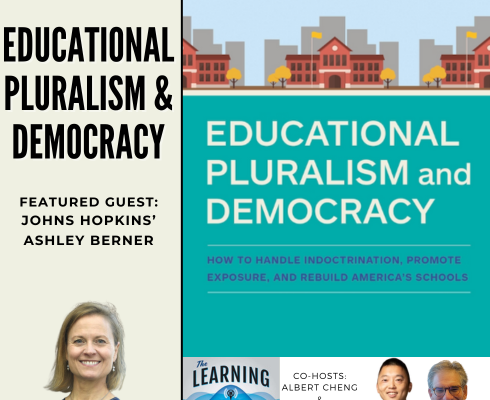
Johns Hopkins’ Ashley Berner on Educational Pluralism & Democracy
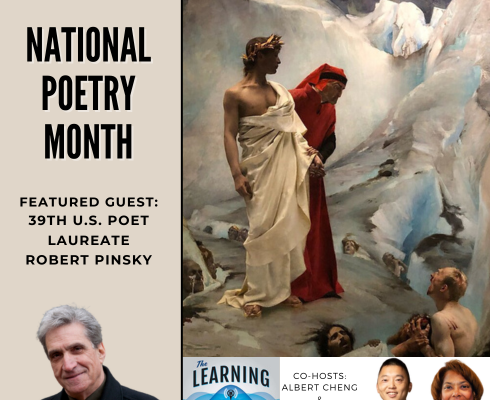
39th U.S. Poet Laureate Robert Pinsky for National Poetry Month
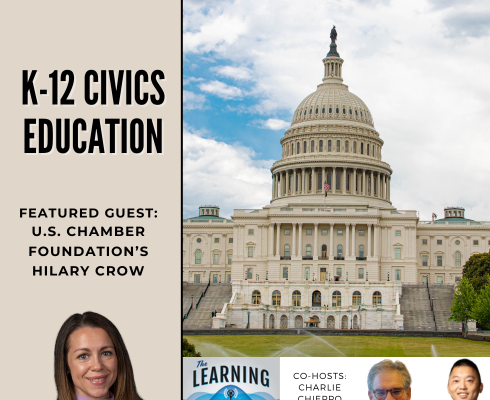
U.S. Chamber Foundation’s Hilary Crow on K-12 Civics Education
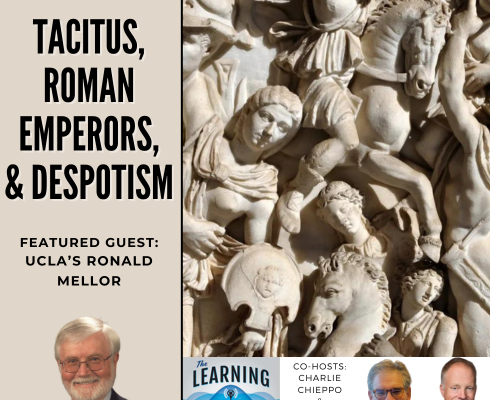
UCLA’s Ronald Mellor on Tacitus, Roman Emperors, & Despotism
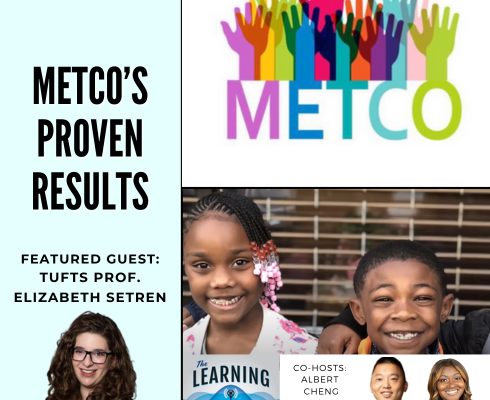
Tufts Prof. Elizabeth Setren on METCO’s Proven Results
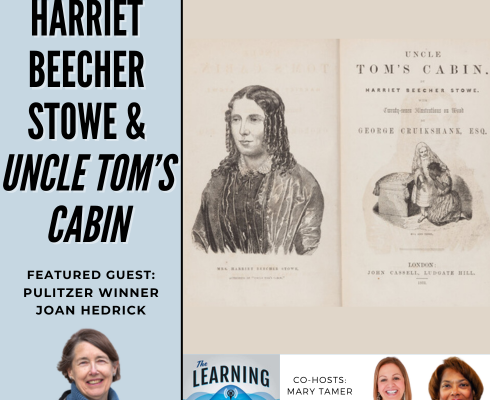
Pulitzer Winner Joan Hedrick on Harriet Beecher Stowe & Uncle Tom’s Cabin
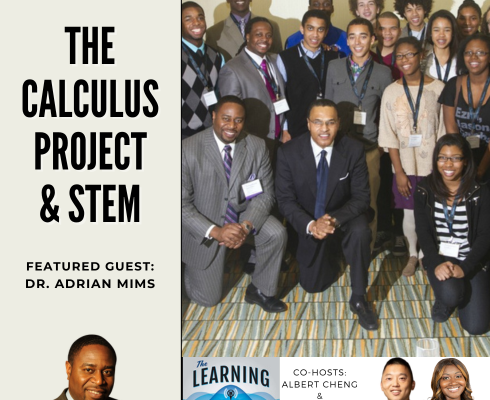
Dr. Adrian Mims on The Calculus Project & STEM
